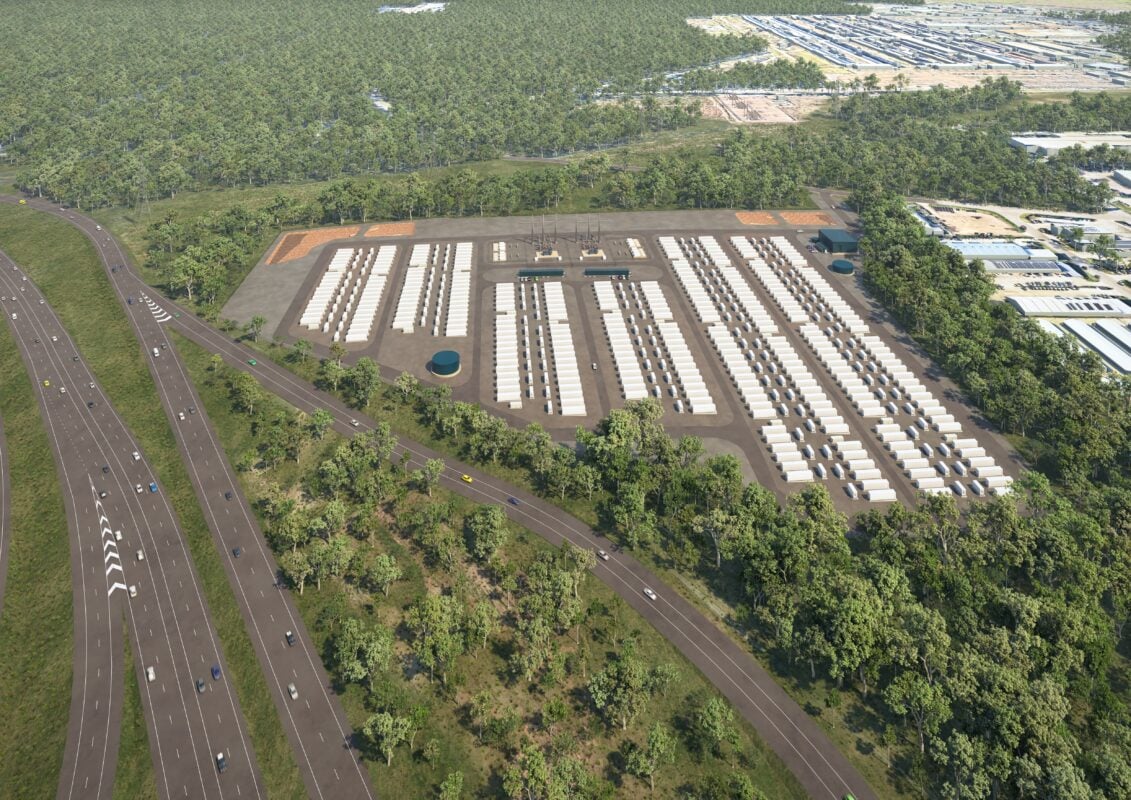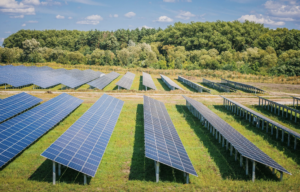Colorado Springs Utilities unveils new, grid-scale battery storage facility – Colorado Public Radio

Report on the Jackson Fuller Battery Energy Storage System and its Contribution to Sustainable Development Goals
1.0 Introduction
Colorado Springs Utilities has inaugurated the Jackson Fuller energy storage facility, the city’s first Battery Energy Storage System (BESS). This project represents a significant advancement in the region’s energy infrastructure, designed to enhance grid efficiency, reliability, and resilience. The initiative is critically aligned with several United Nations Sustainable Development Goals (SDGs), particularly those focused on energy, infrastructure, and climate action.
2.0 Project Overview and Strategic Objectives
The Jackson Fuller facility, located in El Paso County, is a key component of the utility’s strategy to modernize its energy grid. The project was developed in partnership with NextEra Energy, which installed and will maintain the system.
2.1 Facility Specifications
- Technology: The system consists of dozens of shipping container-sized batteries secured within a fire-retardant enclosure.
- Capacity: The facility has a holding capacity of 100 megawatts, sufficient to power approximately 200,000 homes for four hours during peak demand.
- Operational Model: It stores surplus energy generated during low-demand periods and dispatches it during periods of high consumption.
2.2 Strategic Goals
According to Colorado Springs Utilities CEO Travas Deal, the primary objectives are threefold:
- To advance progress towards state-mandated clean energy targets.
- To provide a cost-effective energy solution for ratepayers.
- To meet the community’s growing electricity demands in a sustainable manner.
3.0 Alignment with Sustainable Development Goals (SDGs)
The Jackson Fuller BESS project directly supports the achievement of multiple SDGs by integrating sustainable practices into public utility management.
3.1 SDG 7: Affordable and Clean Energy
The facility is a cornerstone for ensuring access to affordable, reliable, and modern energy for all. Its design promotes:
- Increased Share of Renewable Energy (Target 7.2): The batteries can store energy from variable renewable sources like solar and wind, facilitating their integration into the grid and ensuring a consistent power supply.
- Enhanced Energy Efficiency (Target 7.3): By capturing surplus power from the entire Colorado Springs Utilities system—including natural gas and other sources—the facility minimizes energy waste and optimizes the use of all generated electricity.
- Improved Reliability and Affordability (Target 7.1): The system enhances grid stability, reducing the risk of outages and providing a more cost-effective alternative to building new power plants to meet peak demand.
3.2 SDG 9: Industry, Innovation, and Infrastructure
This project exemplifies the development of quality, reliable, sustainable, and resilient infrastructure.
- Resilient Infrastructure (Target 9.1): The BESS strengthens the energy grid against fluctuations in supply and demand, making it more resilient.
- Sustainable Technology (Target 9.4): As a pivotal technology for the future of energy, battery storage is a tool for upgrading infrastructure to be more sustainable and environmentally sound.
3.3 SDG 11: Sustainable Cities and Communities & SDG 13: Climate Action
The BESS is instrumental in making Colorado Springs a more sustainable and climate-resilient city.
- Climate Change Mitigation (Target 13.2): The project is a key tool for meeting Colorado’s requirement to reduce greenhouse gas emissions by 80 percent by 2030. By enabling greater use of renewables, it directly contributes to climate action.
- Resource Efficiency (Target 11.6): The system’s ability to improve the efficiency of the entire grid reduces the overall environmental impact of the city’s energy consumption.
4.0 Conclusion
The Jackson Fuller Battery Energy Storage System is a forward-looking infrastructure project that provides immediate benefits in grid management and long-term support for sustainability objectives. Operational since May, the facility is already demonstrating its value. It serves as a model for how municipal utilities can leverage innovative technology to meet rising energy demands while simultaneously advancing critical Sustainable Development Goals related to clean energy, resilient infrastructure, and climate action.
Analysis of Sustainable Development Goals (SDGs) in the Article
1. Which SDGs are addressed or connected to the issues highlighted in the article?
-
SDG 7: Affordable and Clean Energy
- The article directly discusses the implementation of a new battery energy storage system aimed at providing “efficient, reliable, and resilient energy.” It highlights the goal of making energy “more cost-effective for rate payers” and meeting “clean energy targets,” which are central themes of SDG 7.
-
SDG 9: Industry, Innovation and Infrastructure
- The focus of the article is the inauguration of the “city’s first battery energy storage system,” a new piece of resilient infrastructure. This project represents an investment in innovative technology (“We think batteries are going to be the future for us”) to upgrade the existing energy system, directly aligning with the goals of building resilient infrastructure and promoting sustainable industrialization.
-
SDG 11: Sustainable Cities and Communities
- The project is a city-level initiative by “Colorado Springs Utilities” to make its energy grid more resilient and sustainable. By helping to reduce greenhouse gas emissions and ensuring a stable power supply for its residents, the project contributes to making the city safer, more resilient, and sustainable.
-
SDG 13: Climate Action
- A key driver for this project, as stated in the article, is the need to meet state mandates for climate action. The article explicitly mentions that “The state of Colorado requires an 80 percent reduction in greenhouse gas emissions from power by 2030,” and the battery system is described as a tool to achieve this goal.
2. What specific targets under those SDGs can be identified based on the article’s content?
-
Under SDG 7 (Affordable and Clean Energy):
- Target 7.1: Ensure universal access to affordable, reliable and modern energy services. The article mentions the project’s aim to provide “reliable, and resilient energy” and to be “more cost-effective for rate payers,” which directly supports this target.
- Target 7.2: Increase substantially the share of renewable energy in the global energy mix. The system is designed to help meet “clean energy targets” and can store energy from renewable sources like “solar, wind,” thus facilitating a greater integration of renewables into the grid.
- Target 7.3: Double the global rate of improvement in energy efficiency. The project is described as “increasing efficient… energy on the grid” and allowing for a “more flexible and efficient use of available power” by storing excess energy for use during peak demand.
-
Under SDG 9 (Industry, Innovation and Infrastructure):
- Target 9.1: Develop quality, reliable, sustainable and resilient infrastructure. The “Jackson Fuller storage facility” is a new piece of infrastructure explicitly designed to provide “reliable, and resilient energy on the grid.”
- Target 9.4: Upgrade infrastructure and retrofit industries to make them sustainable, with increased resource-use efficiency and greater adoption of clean and environmentally sound technologies. The battery storage system is a clean technology that upgrades the city’s energy infrastructure to be more efficient and sustainable.
-
Under SDG 11 (Sustainable Cities and Communities):
- Target 11.b: Substantially increase the number of cities and human settlements adopting and implementing integrated policies and plans towards… resilience. The article showcases Colorado Springs implementing a specific plan—the battery storage facility—to increase the resilience of its energy grid.
-
Under SDG 13 (Climate Action):
- Target 13.2: Integrate climate change measures into national policies, strategies and planning. The project is a direct local action to comply with state-level climate policy, specifically the mandate for an “80 percent reduction in greenhouse gas emissions from power by 2030.”
3. Are there any indicators mentioned or implied in the article that can be used to measure progress towards the identified targets?
- Reduction in Greenhouse Gas Emissions: The article explicitly states the goal is to contribute to the “80 percent reduction in greenhouse gas emissions from power by 2030.” This is a clear, measurable indicator of progress towards climate action (SDG 13).
- Energy Storage Capacity: The facility’s capacity is quantified as “100 megawatts of energy,” which is an indicator of the scale and resilience of the new infrastructure (SDG 9).
- Power Supply for Homes: The article provides a tangible measure of the system’s impact: its ability to “power 200,000 homes for four hours during times of peak energy demand.” This serves as an indicator of energy reliability and access (SDG 7).
- Share of Clean Energy: While not quantified, the ability of the batteries to “capture excess power generated by solar, wind” implies that the percentage of renewable energy stored and dispatched can be used as an indicator for increasing the share of clean energy (SDG 7).
- Cost-Effectiveness: The mention of the system being “more cost-effective for rate payers” implies that energy affordability, measured by electricity rates, is an indicator of success for this project (SDG 7).
4. Table of SDGs, Targets, and Indicators
| SDGs | Targets | Indicators |
|---|---|---|
| SDG 7: Affordable and Clean Energy |
7.1: Ensure universal access to affordable, reliable and modern energy services. 7.2: Increase substantially the share of renewable energy. 7.3: Double the rate of improvement in energy efficiency. |
– Cost-effectiveness for ratepayers. – Ability to power 200,000 homes for four hours during peak demand. – Share of stored energy from solar and wind sources. – Increased efficiency of the grid by storing surplus power. |
| SDG 9: Industry, Innovation and Infrastructure |
9.1: Develop quality, reliable, sustainable and resilient infrastructure. 9.4: Upgrade infrastructure with clean and environmentally sound technologies. |
– Installation of the city’s first battery energy storage system. – Holding capacity of 100 megawatts of energy. – Adoption of battery storage technology. |
| SDG 11: Sustainable Cities and Communities | 11.b: Increase the number of cities implementing plans for inclusion, resource efficiency, and resilience. | – Implementation of a resilient energy project by Colorado Springs Utilities. |
| SDG 13: Climate Action | 13.2: Integrate climate change measures into policies, strategies and planning. | – Contribution towards the state-mandated 80% reduction in greenhouse gas emissions by 2030. |
Source: cpr.org

What is Your Reaction?
 Like
0
Like
0
 Dislike
0
Dislike
0
 Love
0
Love
0
 Funny
0
Funny
0
 Angry
0
Angry
0
 Sad
0
Sad
0
 Wow
0
Wow
0










































































